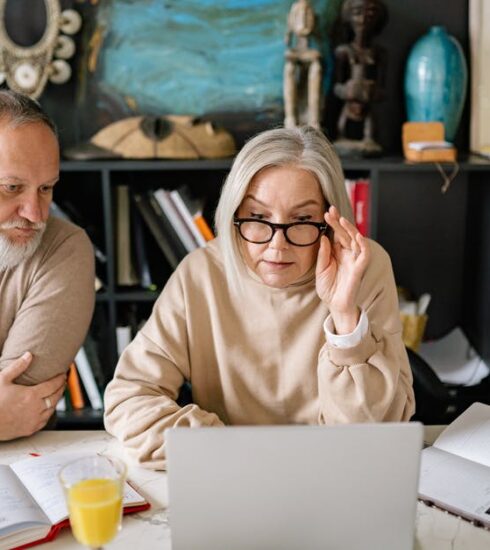Challenge Coins: Understanding This Military Tradition
Coins
Did you know that most people spend approximately $659 on holiday gifts?
Unfortunately, not everyone appreciates the gifts they receive. To avoid this, you’ll want to give a gift that holds a strong sentimental value to the recipient.
For military veterans and enthusiasts, you can’t go wrong with giving a military challenge coin. It’s a military tradition that goes back for decades, if not centuries.
Not sure how challenge coins work or where they come from? Discover their origins and the mechanics of the challenge with our guide below.
What Is a Challenge Coin?
There are a lot of ancient military customs that people still follow today. Saying “oorah” or saluting one another are some great examples. Challenge coins fall under this same umbrella.
A challenge coin is a coin in name only. These aren’t currencies to use for buying and selling. Instead, they are more like collectible medallions.
As the name implies, there is a challenge involved when presenting these medallions. However, a lot of people collect these simply as a hobby. Not a lot of people know about this tradition, making challenge coin collecting a rare but valuable hobby.
Mechanics of Challenge Coins
How do challenge coins work? The most traditional mechanic starts when someone slams their coin on a table or raises it in the air. This initiates the “game.”
Everyone else has to present their challenge coin. If someone can’t produce their coin, they have to buy everyone a drink. If everyone can present their coins, the challenger who started the game has to buy the drinks.
In some circles, accidentally dropping a challenge coin can already initiate a challenge. For some groups, you can’t present any random challenge coin. You have to present a coin of the same kind, proving you are from the same squadron or military group.
Origins of This Military Tradition
Where does this tradition come from? Unfortunately, there is no exact origin of challenge coins. Many believe the first challenge coins started as rewards given to soldiers of the Ancient Roman Empire.
There are also multiple accounts for the origins of modern military challenge coins. Here are some of the known stories:
The French Pilot
One of the most popular tales involves a French pilot captured by German soldiers during World War I.
The enemies stripped the pilot of all his belongings except for a squadron coin that he kept in a pouch. When the pilot escaped, French soldiers almost executed him if he didn’t produce his coin to prove his identity.
Instead of executing the pilot, the French allies gave him drinks to celebrate his return. This, according to this tale, is why challenge coin participants buy drinks.
World War II Pfennig Checks
Another tale takes place during World War II. This origin is a little vaguer and states that Allied soldiers would perform a “pfennig check.” A pfennig was a low-value currency used in Germany before the introduction of the Euro.
The “pfennig check” served a similar purpose to modern military challenge coins. Whoever couldn’t present a coin had to buy everyone else a drink. Soldiers later replaced the pfennig coins with their respective military medallions and modern challenge coins.
Anti-Espionage Tactics
There is also a rumor that challenge coins started as a means of rooting out spies during World War II. During a meeting, members would have to present a specific coin or medallion. Whoever presented a different coin or didn’t know about the challenge was likely a spy.
Organizers changed which coins the members had to present for each meeting. This kept spies out of the loop. Even if a spy learned about the required challenge coin for one meeting, they wouldn’t know about the next mandates.
Guerilla Tactics
One final tale involves guerilla soldiers in the Philippines and their fight against Japanese occupants during World War II. Similar to the story above, the soldiers had to present challenge coins to identify spies planted by the Japanese.
It’s uncertain if modern challenge coins started here or if the guerilla fighters in this origin tale found inspiration in the stories listed above.
Why a Challenge Coin
The main purpose of a challenge coin is to prove a soldier’s identity and allegiance. During times of war, it’s a better proof of identity than an ID card. Enemies can create fake ID cards but a medallion, with intricate designs and hidden symbols, isn’t easy to replicate.
Today, challenge coins still serve as a form of camaraderie. The challenge of producing a coin for drinks is a good way of uniting soldiers from the same unit.
For collectors, military challenge coins hold significant historical value and are a symbol of old traditions. A lot of collectors try to obtain old coins. Some focus on collecting coins used by a particular unit.
Of course, they also make for great military gifts!
A Few Fun Facts
Did you know that every US President gets a special challenge coin? You can also find modern challenge coins designed not to commemorate war achievements but civilian achievements too.
Even retail organizations and companies now use challenge coins. Managers might give these out to signify an employee’s significance or major contributions to their business.
For most organizations, challenge coins are also a symbol of acceptance. A recruiter may pass a coin through a handshake. This represents that the other person is now an official member of the company or group.
Discover More Popular Military Traditions
Now you know the origin and mechanics of this fun and significant military tradition. Challenge coins are more than tools for a drinking game. They represent military history, camaraderie, allegiance, and achievements.
Of course, you shouldn’t stop learning with this in-depth guide about military challenge coins. For more entertaining and educational articles, feel free to continue reading through our other posts today.






